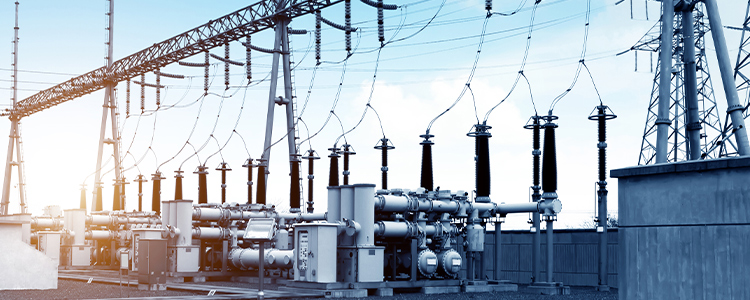- All
- Product Name
- Product Keyword
- Product Model
- Product Summary
- Product Description
- Multi Field Search



Views: 0 Author: Site Editor Publish Time: 2024-09-04 Origin: Site








Transformer substationsare the backbone of modern electrical distribution systems. These essential facilities are where high-voltage electricity from power plants is transformed into a lower voltage for distribution to homes and businesses. But what exactly goes on inside these crucial components of our power grid? In this article, we will explore the key components of a transformer substation, shedding light on the complex machinery that ensures our lights stay on.
Transformer substationsplay a vital role in the electricity supply chain. They act as intermediaries between power generation facilities and the end-users, such as homes, businesses, and industries. The primary function of a transformer substation is to step down the high-voltage electricity generated at power plants to a lower voltage suitable for distribution. This voltage transformation is essential for efficient and safe electricity transmission over long distances.
Additionally, transformer substations serve several other critical purposes. They help regulate voltage levels to ensure a stable and reliable power supply. Substations also provide a point for monitoring and controlling the flow of electricity, allowing for the detection of faults and the implementation of necessary maintenance measures. Furthermore, they play a crucial role in ensuring the safety of the electrical grid by providing a means to isolate and de-energize sections of the network during maintenance or emergencies.
Transformer: At the heart of every transformer substation is the transformer itself. This large and complex piece of equipment is responsible for changing the voltage of the electricity passing through it. Transformers work on the principle of electromagnetic induction and consist of two or more coils of wire wrapped around a magnetic core. The transformer’s primary coil is connected to the high-voltage side, where electricity enters the substation. The secondary coil is connected to the low-voltage side, where electricity is distributed to the grid. The transformer’s design allows it to step down the voltage while maintaining the same power level, ensuring that the electricity delivered to consumers is at the correct voltage for use.
Switchgear: Another critical component of a transformer substation is the switchgear. This collection of electrical disconnects, fuses, and circuit breakers is used to control, protect, and isolate electrical equipment. Switchgear is essential for ensuring the safe operation of the substation, as it allows for the safe disconnection of equipment during maintenance, the protection of the transformer and other equipment from electrical faults, and the control of the flow of electricity within the substation. Modern switchgear is often housed in insulated enclosures to protect against environmental factors and to reduce the risk of electrical arcing.
Busbars: Busbars are conductive materials, typically made of copper or aluminum, that serve as a central hub for distributing electricity within the substation. They act as a junction point where incoming and outgoing electrical circuits are connected. Busbars are designed to carry large amounts of current and are often found in substations to connect the transformer, switchgear, and other equipment. The use of busbars helps to reduce electrical resistance and minimize power loss, ensuring efficient operation of the substation.
Control room: The control room of a transformer substation is the nerve center for monitoring and controlling the operation of the facility. It is equipped with various instruments and devices, such as voltmeters, ammeters, and frequency meters, to monitor the electrical parameters of the incoming and outgoing power. The control room is also where the human operators can control the operation of the switchgear, transformers, and other equipment, ensuring the safe and efficient operation of the substation. Advanced transformer substations may also have automated control systems that allow for remote monitoring and control, enhancing the efficiency and reliability of the power grid.
Regular maintenance and upgrades are crucial for ensuring the reliable and efficient operation of transformer substations. Over time, components such as transformers, switchgear, and busbars can experience wear and tear, leading to potential failures and outages. Routine maintenance, including inspections, cleaning, and testing, helps identify and address potential issues before they escalate into costly problems. Additionally, regular maintenance extends the lifespan of the equipment, reducing the need for premature replacements.
Upgrades are equally important, as they allow substations to keep pace with advancements in technology and changes in electricity demand. Upgrading to modern, more efficient equipment can improve the overall efficiency of the substation, reducing energy losses and lowering operational costs. Moreover, upgrades can enhance the safety and reliability of the substation, incorporating features such as advanced monitoring systems and automated controls. Investing in regular maintenance and upgrades ensures that transformer substations continue to perform optimally, providing a stable and reliable power supply to the grid.
Transformer substations are the unsung heroes of our electrical grid, ensuring that the electricity generated at power plants is safely and efficiently transformed into a form that powers our homes and businesses. Understanding the key components of a transformer substation, from the transformer itself to the switchgear, busbars, and control room, helps us appreciate the complexity and importance of these facilities. Regular maintenance and upgrades are essential for keeping substations running smoothly, ensuring a reliable and efficient power supply for all. As technology continues to advance, the role of transformer substations in our power grid will only become more critical, making their understanding and maintenance a priority for the future of electricity distribution.
content is empty!